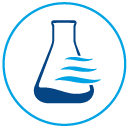
Is Your Food Safe? Ensure It is with Pesticides Testing
1. Brief overview about Pesticides in Food
Pesticides encapsulate a wide range of toxins including herbicides that kill weeds, insecticides that kill bugs, fungicides that kill fungi, rodenticides that kill rodents and antimicrobials. The use of these toxic substances to rid our food crops of invasive species that cut crop yields is a very big business. However, pesticides in food are also poisonous to humans, especially children, and can build up in our systems leading to chronic health risks of pesticides in food over a long time consuming them.
For this reason pesticides are regulated by state and federal governments. But more importantly, when it comes to pesticides and food safety, our food products are regularly tested for the presence of even trace amounts of pesticides. Produce, dairy, meat and other processed foods are regularly tested for pesticides in order to prevent their misuse in farming and to protect human health.
2. Importances of Pesticide testing
The two main purposes of pesticide testing are:
A- To Identify and Prevent Overuse and Misuse of Pesticides
By testing for pesticides in foods that we are also able to track from their original sources, we can discover whether there have been overuses of pesticides or uses of pesticides that are no longer approved. Some pesticides have been banned for usage on food crops because of their excessively toxic environmental effects. Food testing is done to identify the toxic pollutants and their specific levels against the Limits of Detection (LOD) as well as against conservative “tolerance levels” set by the US Environmental Protection Agency for those pesticides.
When unauthorized pollutants are found in testing the results can be traced back to the farms of origin and further tests can discover whether violations have occurred and fines and other penalties can be assessed to prevent further violations.
If levels of pesticides that measure above the set “tolerance levels” are detected, then immediate actions can be taken to prevent human consumption of those products and results can be traced back to farms where usage violations may have occurred to see if penalties should be applied.
B- To Protect Human Health
The main reason for pesticide testing has to do with minimizing the health risks of pesticides in food. Any time hazardous pollutants from pesticides are found in laboratory testing of food products, the remainder of the tested products must either be cleaned (if that is a viable option) or removed from the food supply in order to protect human health. Perhaps more importantly, vital data about the use of pesticides and food safety is collected and made available for further study which can lead to greater protection efforts in the future.
3. Why is Pesticide testing necessary for food safety?
Pesticide testing protects all consumers of food products by identifying levels of pesticides in foods that can cause health problems presently and in the future. People need to have good information about the health and safety of the foods they eat and deserve the protections that are in place to safeguard them. Laboratory testing for pesticides in foods is the most accurate and reliable method for protecting human health from these dangerous pollutants. Because only small samples of these foods can be tested it is vital that the test samples are representative of a cross section of the crop or meat or processed food being tested. Laboratories ensure that proper procedures are followed for maximum accuracy of test results.
In the long run, another essential aspect of pesticides in food testing is to compile necessary data and trends, to identify any and all problem pollutants and to raise public awareness for the health risks of pesticides in food. These efforts are made for current food safety, but also in order to reduce violations, identify problems with pesticide usage, and to continually improve the quality of our food.
4. Conclusion
The US Environmental Protection Agency (EPA) applies heightened health risks of pesticides in food assessments in order to set conservative “tolerance levels” for pesticide residues that pose health risks to humans. These levels are often set at 100 times the margin of safety from any known human health effects in order to be confident that reported levels will not risk human health. For that reason, even a “positive” result does not necessarily mean that levels of pesticides pose a human health risk. This extra precaution helps to protect human health not only immediately but in the long term.
Torrent offers testing for organochlorine and organophosphorus pesticides and herbicides. And we have experience with customized projects involving pesticides detection.
Torrent provided multi-incremental sample preparation for a project testing 1600 samples for pesticides. We received these samples over a six-week period on a standard 5-day TAT (Plus 2 days for drying and particle reduction). Bringing Torrent’s MIS experience and project management skills to bear, Torrent Laboratory performed beyond our client’s expectations. We not only delivered all data on time, but also provided multiple dilutions where necessary. Our timely analysis allowed the client a generous window to thoroughly review the data and request additional analysis within the required 14-day holding time for pesticides.
Our lab boasts the most respected certifications in the business, testament to our ability to provide the highest level of analysis and results, time and again. When only the best is good enough, call Torrent.
Technical Certifications:
- Environmental Laboratory Accreditation Program (ELAP)
- Department of Defense (DoD ELAP)
- DOE Consolidated Audit Program- Accreditation Program (DOECAP-AP)
Business and Administrative Certificates:
- California Public Utilities Commission (PUC)—MBE
- Regional Transportation—Caltrans, BART, VTA, etc.
- State of California—SBE






